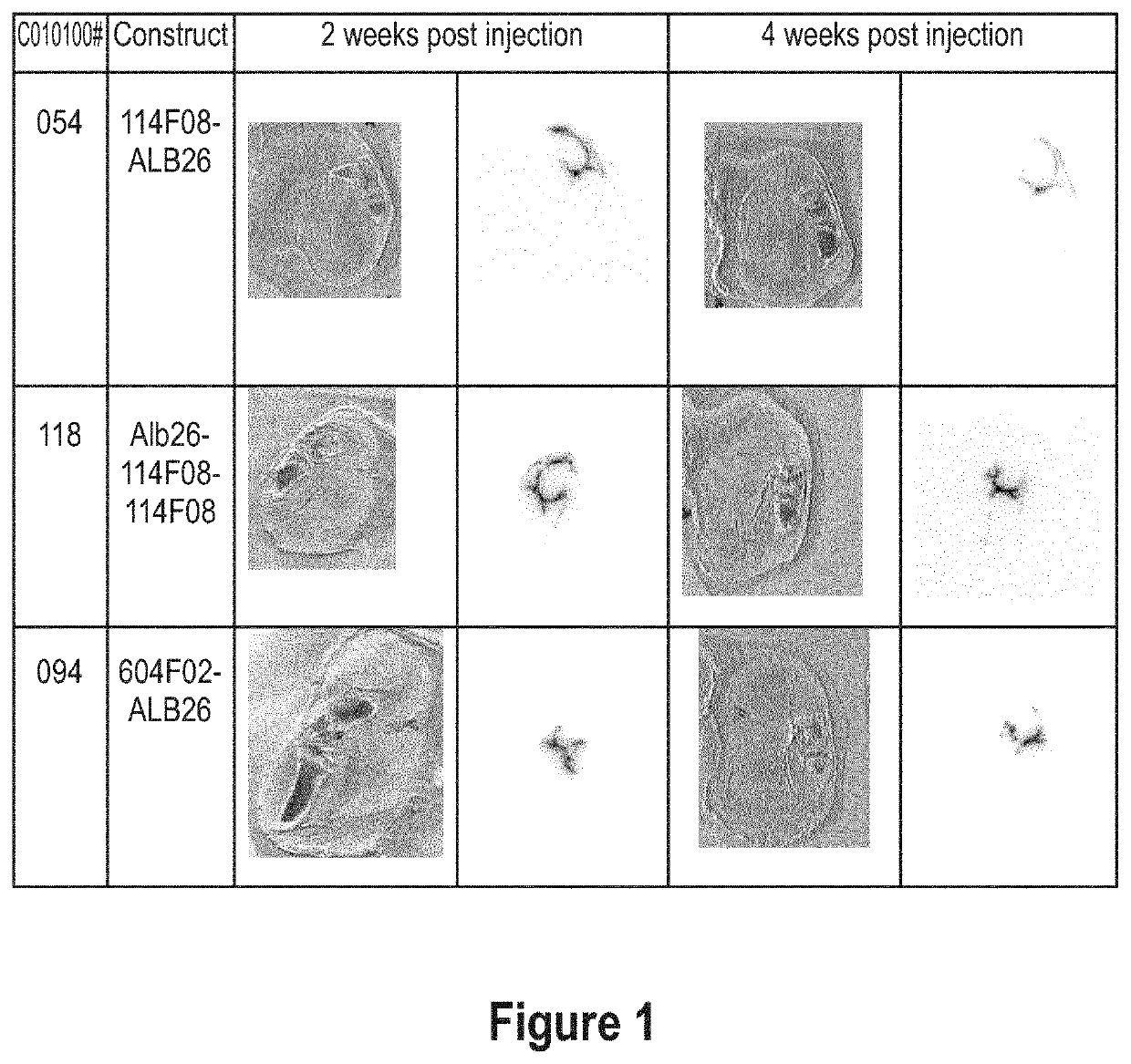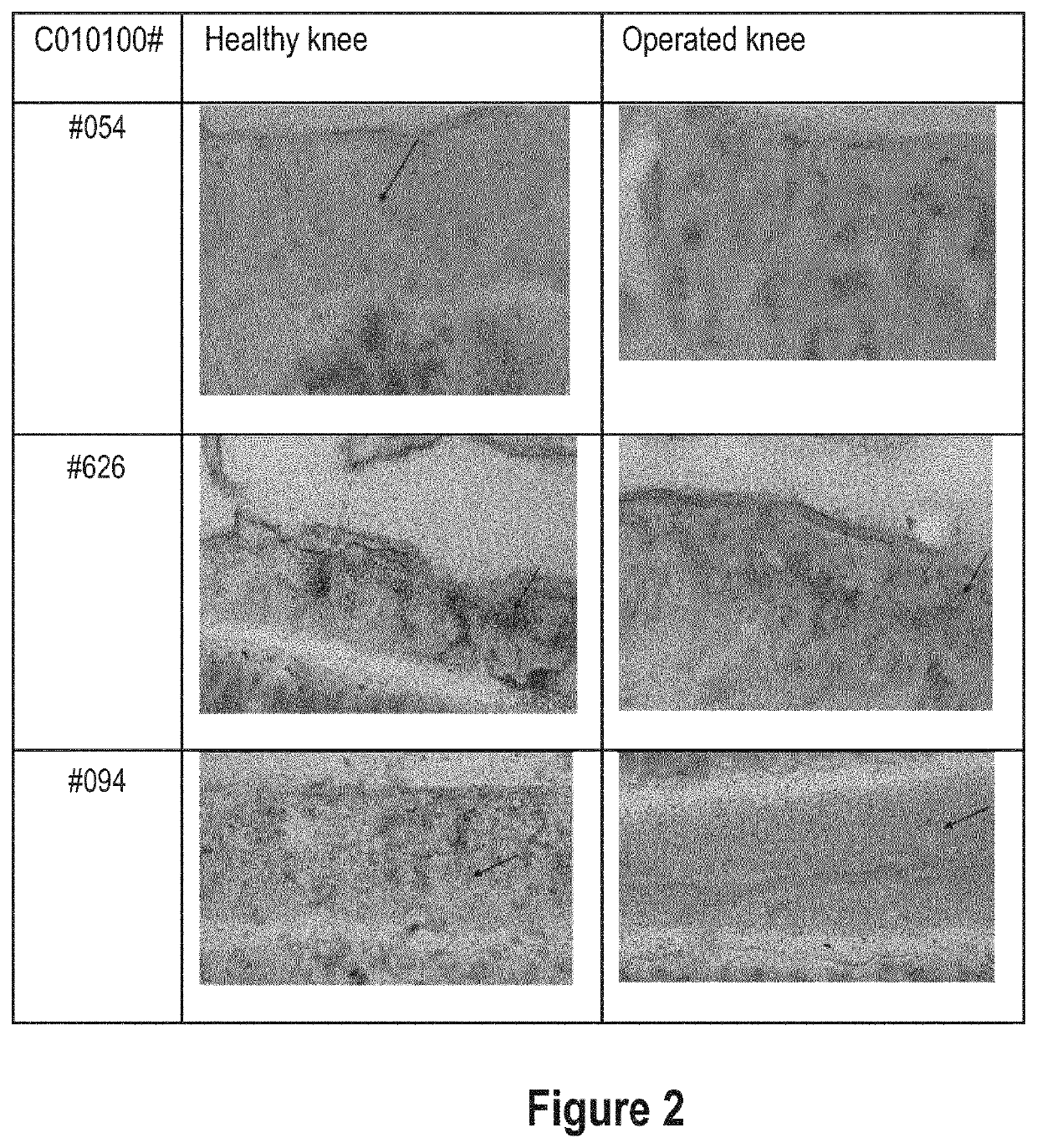Aggrecan binding immunoglobulins
a technology of immunoglobulins and aggrecans, applied in the field of immunoglobulins, can solve the problems of ineffective pharmacological treatments, many such therapies are ineffective, and many such therapies are associated with side effects, so as to increase the efficacy of drugs, increase the retention rate of drugs, and increase the effect of drug efficacy
- Summary
- Abstract
- Description
- Claims
- Application Information
AI Technical Summary
Benefits of technology
Problems solved by technology
Method used
Image
Examples
example 1
Example 1 Immunization of Llamas with Aggrecan, Cloning of the Heavy Chain-Only Antibody Fragment Repertoires and Preparation of Phage
[0695]The present inventors realized that the purpose of animal models of OA is to controllably reproduce the scale and progression of joint damage, so that opportunities to detect and modulate symptoms and disease progression can be identified and new therapies developed. An ideal animal model is of relatively low cost and displays reproducible disease progression with a magnitude of effect large enough to detect differences within a short period of time. If the model progresses too rapidly to end-stage degeneration, intermediate time points, which are representative of OA pathophysiology, may not be obtainable and in IT the absence of this information, subtle effects of potential interventions may be missed. Recognizing that OA is an end-stage phenotype, the result of an interaction of mechanical and biochemical processes, animal models allow these ...
example 2
Example 2 Characterization of the Lead Panel (Purified ISVs) Aggrecan
[0712]After the primary screening, initial assessment of binding via ELISA, determination of off-rate and species cross-reactivity, the ISVs of the Lead panel were subjected to further characterization.
2.1 Formatting Aggrecan Lead Panels with ALB26 (n=19)
[0713]It is anticipated that the final format of a molecule for clinical use comprises one or two Aggrecan binding ISVs (“anchors”) and also one, two or more ISVs or other moieties with a therapeutic mode of action. Hence, the 19 selected clones were fused in monovalent or bivalent format to ALB26 (CAP-ALB26 or ALB26-CAP-CAP) and expressed in P. pastoris. ALB26 is a variant of ALB11 (Albumin binding ISV) with w two mutations in CDR1, which completely abolish binding to Albumin from different species. The fusion to ALB26 was performed in order to mimic the size of a final polypeptide format comprising an Aggrecan binder. Without being bound by any theory, the invent...
example 3
Example 3 Biophysical Characterization of Monovalent Lead Constructs—Aggrecan
[0728]Since all selected constructs demonstrated various favourable characteristics, whether or not in combination, the ISVs 114F08 and 604F02 and their corresponding ALB26-formats (C010100054, -118 and -094) were used as exemplary constructs representing the Lead panel for further characterization,
3.1 Expression of Monovalent 114F08 and 604F02 in E. coli and P. pastoris
[0729]For biophysical characterization, the monovalent Nanobodies 114F08 and 604F02 were expressed with FLAG3-His6-tags in E. coli and / or P. pastoris and purified according to standard protocols (e.g. Maussang et al. 2013 J Biol Chem 288(41): 29562-72).
3.2 pl, Tm and analytical SEC of 114F08 and 604F02
[0730]For the Thermal shift assay (TSA), 5 μL purified monovalent Nanobody (800 μg / ml) was incubated with 5 μL of the fluorescent probe Sypro Orange (Invitrogen, 56551) (final concentration 10×) in 10 μL buffer (100 mM phosphate, 100 mM borate...
PUM
| Property | Measurement | Unit |
|---|---|---|
| residence time | aaaaa | aaaaa |
| Ka | aaaaa | aaaaa |
| stability | aaaaa | aaaaa |
Abstract
Description
Claims
Application Information
 Login to View More
Login to View More - R&D
- Intellectual Property
- Life Sciences
- Materials
- Tech Scout
- Unparalleled Data Quality
- Higher Quality Content
- 60% Fewer Hallucinations
Browse by: Latest US Patents, China's latest patents, Technical Efficacy Thesaurus, Application Domain, Technology Topic, Popular Technical Reports.
© 2025 PatSnap. All rights reserved.Legal|Privacy policy|Modern Slavery Act Transparency Statement|Sitemap|About US| Contact US: help@patsnap.com



